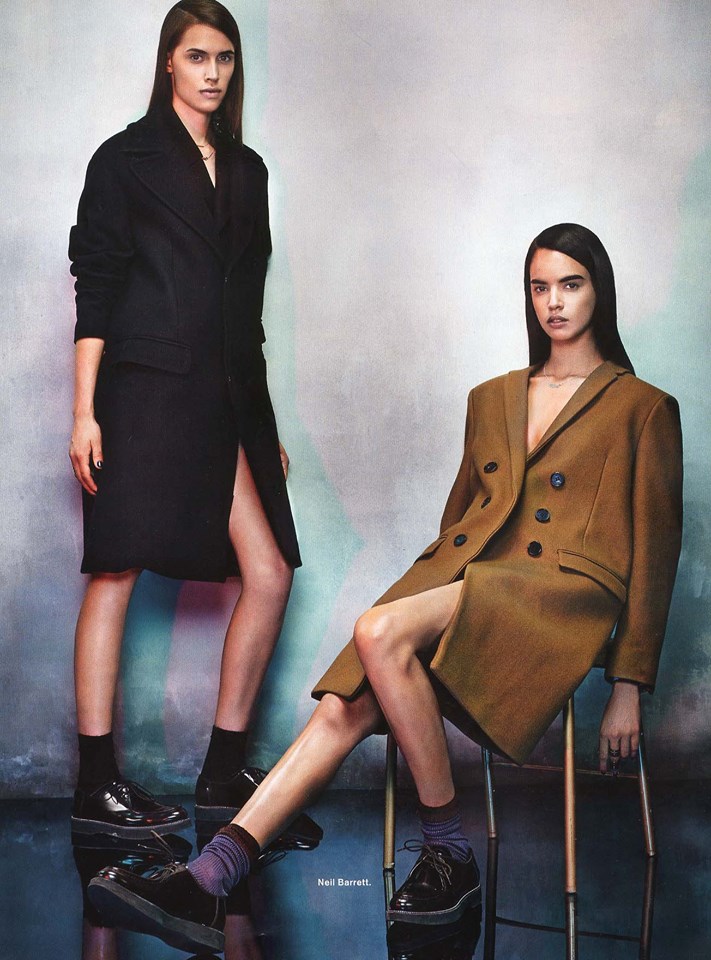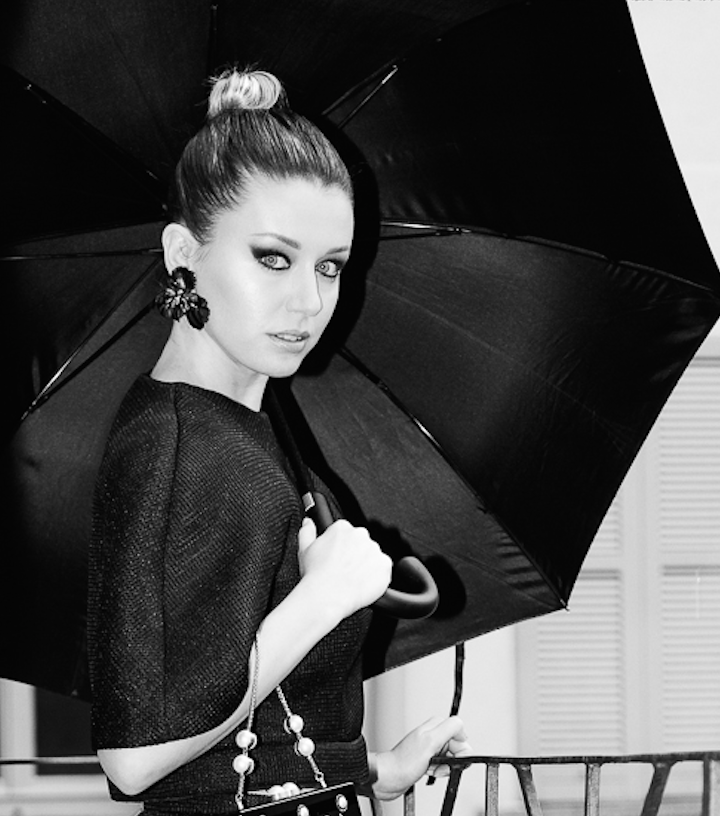Inglese, classe ’65, Neil Barret, terminati gli studi alla Saint Martins e al Royal …
Una stratosferica vena creativa unita ad un intuito e a un senso degli affari fuori dal comune hanno reso Christian Dior uno dei più grandi couturier del secolo scorso. Classe 1905, figlio della Normandia, il giovane Dior interruppe gli studi per trasferirsi con l’amico Jean Bonjean a Parigi. In questi anni collaborò con “Le Figaro” occupandosi della pagina di moda; solo in seguito fece i primi schizzi per diverse maison. Verso la fine degli anni ’30 divenne il primo figurinista dell’atelier di Lucien Lelong e fu proprio in questo periodo che sviluppo’ e affinò lo “stile Dior”. Nel primo dopo guerra ci fu l’epifanico incontro con l’imprenditore tessile Marcel Boussac; tale incontro si rivelò la chiave per il successo della nascente maison. Nel 1946, inaugurò il primo atelier in Avenue Montaigne, nella Ville Lumiére, e fu assunto come tagliatore il giovanissimo Pierre Cardin. L’austerità e la penuria di materia che facevano da cornice alle macerie di un’Europa ferita , stridevano con lo sfarzo della figura femminile immaginata dal giovane Christian. I suoi voluttuosi abiti che tanto stonavano con la povertà del periodo, furono indossati “dalle più ricche donne del mondo”. Il 12 febbraio 1947, Dior lanciò le sue prime collezioni moda, Corolla ed Eight, che furono presto ribattezzate dalla stampa con “New look”, per via di quello stile rivoluzionario che sconvolse il mondo della moda. Il successo di pubblico e critica fu immediato a tal punto che Dior ebbe la capacità di riportare la capitale della moda ai fasti pre guerra. L’espansione del brand fu rapidissima: Christian Dior conquistò gli Stati Uniti, e con “Miss Dior” divenne leader anche nel settore dei profumi. Borse, pellicce, rossetti, guanti e addirittura calze: negli anni 50’ Dior voleva dire Francia e da solo valeva il 5% delle esportazioni francesi. Da Parigi a Città del Messico, da Roma a L’Avana, passando per Hollywood, il perfetto piano di distribuzione del marchio non si arrestò neanche con la morte dello stilista nel 1957. L’ascesa al trono della maison, del ventunenne Yves Saint Laurent, fu un trionfo, la sua collezione “Trapezio”, lontana dallo stile del suo predecessore, diede un nuovo scossone al circo della moda. Il regno di Saint Laurent durò pochissimo, obblighi di leva prima e voglia di mettersi in proprio dopo, fecero abdicare il giovane stilista in favore di Marc Bohan, che riportò il marchio alla tradizione del suo fondatore. Pret-à-porter e lancio della “Dior Homme” furono le novità degli anni 60’ e 70’. Gli anni ottanta invece rappresentarono un periodo di forte crisi della casa francese, che ritrovò l’antico smalto sul finire degli anni 90′ con Gianfranco Ferrè prima e John Galliano dopo.
Carico, romantico, quasi opulento, un abito Dior conserva ancor oggi quello spirito e quella voglia di rivalsa tipica degli anni del boom; il segreto del suo fascino sta nell’essere interessante; d’altronde nessun tipo di bellezza non può che essere interessante.
His stratospherical artistic and creative streak united to his big business instinct have made Christian Dior one of the greatest couturiers of the last century. Born in 1905, son of Normandy, the young Dior quit his studies to move with his friend Jean Bonjean to Paris. During those years he collaborated with “Le Figaro” working on the fashion pages, and, only later started to draw his sketches for different maisons. Towards the end of 30s he became the first dress designer of Lucien Lelong’s atelier, and it was right in that period when the “Dior style” was developed. After the WWI he met the textile enterpreneur Marcel Boussac, this meeting was the key moment of the future success of the rising maison. In 1946 he inaugurated the first atelier in Avenue Montaigne and the young Pierre Cardin was employed as cutter. The austerity times after the war and the lack of raw material were in contrast with the imagine of the woman in the head of the sailor. His luscios dresses, that clashed with the poverty of that period, were wore by “some of the richest women of the world”. The 12th February 1947, Dior launched his first fashion collections, Corona and Eight, that were called by the press “New look” because of the revolutionary style. The success among the public and the critics was immediate, Dior gave new light to Paris, taking the capital city of fashion to its splendour pre-war. His ascent was very fast, Dior conquered the States and with “Miss Dior” he became the leader also in the perfume sector. Bags, furs, lipsticks, gloves and even socks: in the 50s Dior meant France, on its own it was worth as the 5% of the french exportations. From Paris to Mexico City, From Rome to Havana, passin through Hollywood the perfect distrubution plan didn’t stop not even after the death of the stylist in 1957. The rise to the throne of the maison of the 21 years old Yves Saint Laurent, was a Triumph, and his collection “Trapezio” gave a new shake to fashion’s circus. The reign of Saint Laurent didn’t long, the required military service and then the will to have his own brand, made him abdicate in favor of Marc Bohan, who brought the brand back to the tradition of its founder. The Pret-à-porter and the launch of the Dior Homme were the news of 60s and 70s. The eighties represented a period of hard crisis for the french maison, the brand then was relaunched in the 90s by Gianfrance Ferré and then by John Galliano. Heavy, romantic, almost extra decorated, a dress by Dior still keeps today the typical spirit of the years of the boom, the secret of its charm is being always interesting… well after all, every kind of beauty has to be interesting.
With love Elena


















Dior per me è eleganza, originalità e sensualità. Questi tre aggettivi rappresentano lo stile di Christian e ne fanno inimitabili le sue creazioni. E’ uno dei designer che mi stupisce ogni volta, mantenendo sempre la sua linea, ma aggiungendo sempre quel particolare che lo contraddistingue. Colleziono libri di moda e, devo dire che il mio preferito (dopo quello di Chanel) è Dior for ever , uscito pochi mesi fa mi ha già fatto innamorare! Sfogliandolo si intraprende un viaggio, non solo nel mondo della moda visibile in passerella, ma nella creazione e produzione dei capi.. vi sono stati inseriti anche dei bozzetti di abiti couture meravigliosi. Ele, visto che sono collegati tra loro dall’atelier Lelong, potresti fare un post su Balmain?
Onestamente non conoscevo tutti questi dettagli… post molto istruttivo! beh…Dior è….Dior!!! Classe, unicità e lusso!!!
w l’artigianato!
http://emiliasalentoeffettomoda.altervista.org/guida-per-acquisti-handmade-w-lartigianato/
grazie
Mari
Il primo nome della moda e’ Dior. Sin da bambina lo sentivo nominare dalle signore come se fosse un gioiello. Negli anni ho capito che era verame te il piu’ grande e bello gioiello della moda.
Sono per metà torinese e per metà parigina e posso dirti che hai ragione, Dior, per anni, è stato un motore trainante dell’economia della città, ancora oggi, i turisti legati al mondo della moda non perdono la visita alla maison Dior, è una meta, un simbolo, sai che lì è passata la storia di questo magico mondo.
Dior è: Francia, innovazione, bellezza, è la donna nel tempo che si evolve, è il carattere del lusso.
Bellissime immagini.
adoro dior. e’ uno dei miei preferiti.